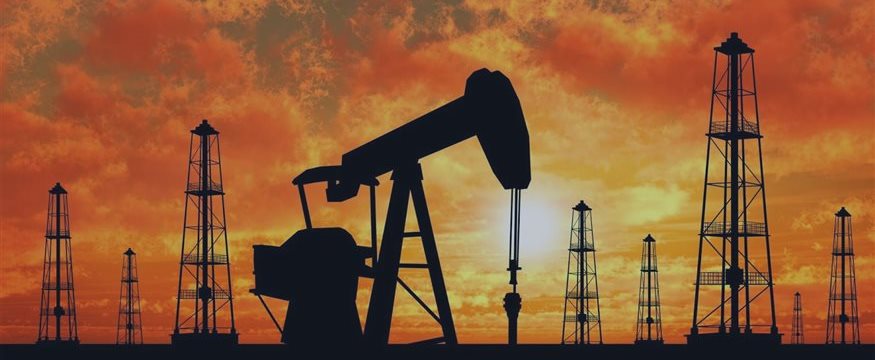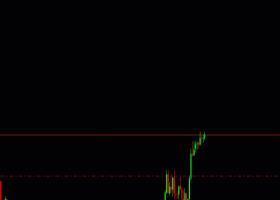Gasoline prices have steeply fallen from highs hit in June, and now markets are signaling that consumers will get even more relief at the pump.
A global surplus of crude oil is the main driver behind the decline in gasoline. Relatively cheap oil has made it more profitable for refiners to produce gasoline and other fuels, and they have enlarged production to record levels. This boom in supplies has pushed gasoline prices down. Traders and other market observers expect the flow of both crude oil and gasoline to keep rising, likely exerting more downward pressure on prices.
According to motor club AAA, on Thursday the average retail price for a gallon of regular gasoline was $3.42, down 3.8% from the same period in 2013. For this time of year, gasoline prices are at their lowest level in four years. Analysts at AAA predict prices could fall another 15 to 20 cents by the end of October.
This year the consumer-driven US economy has posted shaky growth this year. And a sustained period of relatively low gasoline prices could help to bolster it. Many policy makers remain concerned about the outlook, with a disappointing August jobs report adding to nervousness. By paying less at the pump, consumers could use the cash to make other purchases.
Trading in futures markets shows that gasoline retail prices have further to fall. Gasoline for October delivery, the front-month contract, on Thursday slipped 0.24 cent, or 0.1%, to $2.5241 a gallon, a 10-month low. During intraday trading, prices dipped into bear-market territory, defined as a 20% drop from a recent high. Gasoline has declined 19% from its 52-week high hit in June and is off 9.3% this month.
Retail gasoline prices often fall as summer vacations finish, but the speed and size of the recent decline underscore shifts in energy markets that many analysts expect to be lasting. U.S. gasoline output climbed above 10 million barrels a day for the first time on record in late April, according to the Energy Information Administration, and held above that level in 11 of the 19 weeks since then.
Pump prices track futures prices, with a lag of several weeks. Taxes account for much of the difference between futures and retail prices. Money managers such as hedge funds historically have been bullish on gasoline prices. But as a group, they have the smallest bet on higher prices since September 2010, according to the latest data from the Commodity Futures Trading Commission.
As refineries can profit from relatively cheap US oil, they are running at 93.9% of their operable capacity, the highest level since August 2005. The per-barrel price of U.S. oil is about $5 less than the global Brent benchmark, because new technologies to access supplies trapped in shale-oil fields have boosted U.S. crude output to the highest level in decades.
The price gap allows refiners to sell petroleum products abroad at lower prices than their competitors outside the U.S. Also, the type of crude oil produced from shale-oil fields yields more gasoline in the refining process than other types of oil.
Front-month crude oil on the New York Mercantile Exchange rose $1.16, or 1.3%, to $92.83, on Thursday but is down 13% from its 2014 settlement high in June.
"The refiners right now have a lot of economic incentive to produce everything, including gasoline," said Darwei Kung, portfolio manager of Deutsche Asset & Wealth Management's $700 million Deutsche Enhanced Commodity Strategy Fund. Mr. Kung's fund allocates less money to gasoline than the fund's benchmark does. "Consumers should continue to see a lower price."
Tensions in the Middle East could cause oil prices to spike as
they did in June when Islamist militants swept through northern Iraq.
On Wednesday, President Barack Obama authorized airstrikes in Syria and
expanded a bombing campaign in Iraq.
As some analysts say, higher oil prices might discourage refiners from producing as much gasoline, which would constrain fuel supplies and support prices. Moreover, unforeseeable events, such as a hurricane or refinery disruption, could send gasoline prices higher, they added. And because gasoline, unlike most forms of crude oil, can be exported, strong global oil-product demand could also lift prices.
Retail gasoline prices have held in a range of between about $3.25 and $4 a gallon in the past three years, said Kevin Logan, chief U.S. economist at HSBC. The national average hasn't fallen below $3 a gallon since December 2010, when a weak U.S. economy prompted a cutback in driving.
U.S. gasoline production usually dips in September and October, as refineries shut units to perform seasonal maintenance. Analysts at Barclays project that maintenance activities will cut refinery output by as much as 1.6 million barrels a day, but that amount could be lower if refineries delay maintenance to take advantage of high oil supplies, said Michael Cohen, oil analyst at the bank.
And low prices could be sowing the seeds of a rally. The EIA said Tuesday that gasoline demand is likely to decline both this year and next. But that could change if the relatively low prices stoke consumption.



